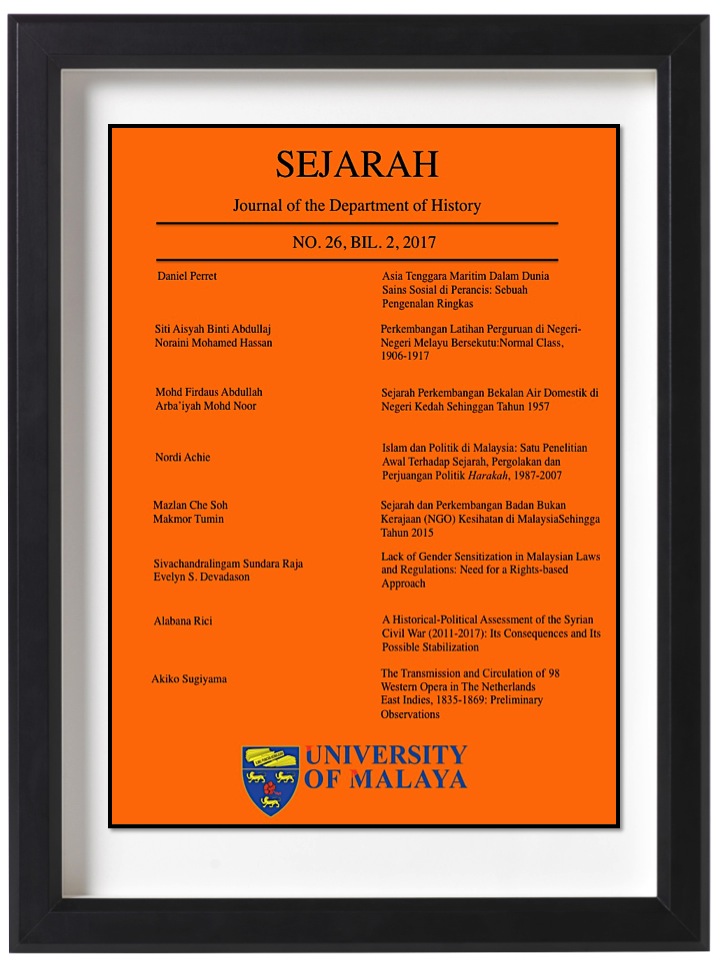PERKEMBANGAN LATIHAN PERGURUAN DI NEGERI-NEGERI MELAYU BERSEKUTU: NORMAL CLASS, 1906-1917
Abstract
This paper examines how the British administration of the Federated Malay States (FMS) developed Normal Class to improve teacher training in English schools from 1906 to 1917. The 1902 Education Act, which made significant provisions for secondary and technical education and led to the rapid growth of training colleges in England and Wales, had an effect on the development of teacher training for English schools in the FMS. Following the suggestion of R.J. Wilkinson, Normal Classes for the training of assistant teachers commenced in January 1905 at the Victoria Institution. Initially, students from Victoria Institution and the Methodist Boy’s School were used to test the effectiveness of Normal Class. The success of Normal Class at Victoria Institution led to the opening of more such classes in the states of Perak, Melaka and Penang. Teacher training was emphasized to not only improve the quality of education in English schools but also to attract foreign investors to advance the economy especially of urban areas. This article focuses on the implementation of Normal Classes in Selangor and Perak. It has been found that, prior to the First World War, Normal Classes in Kuala Lumpur turned out to be more successful than in Perak. Teacher training in Kuala Lumpur, the administrative centre of the FMS, was desired to increase the number of local officials capable of speaking English in government departments. There was also considerable demand among capitalists for Normal Classes in English schools.


